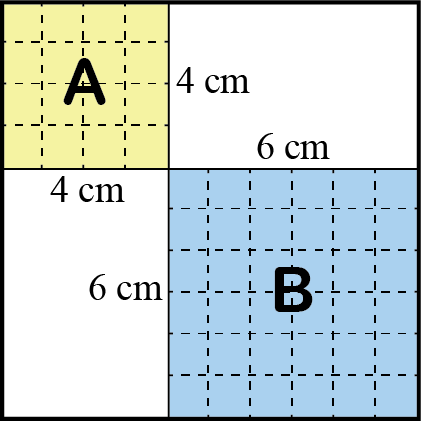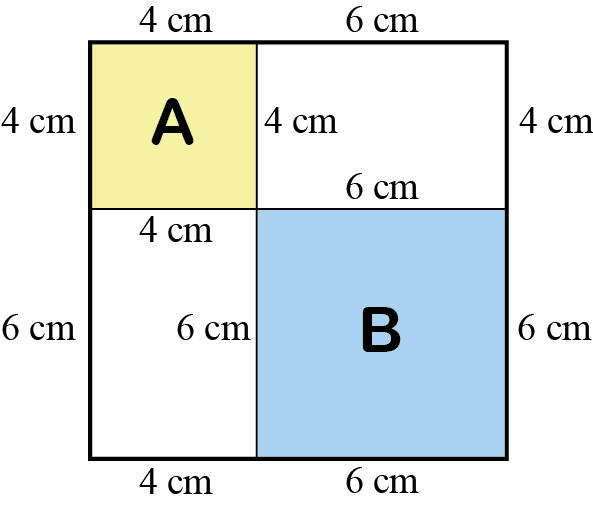

A large square is divided into four rectangles by drawing two straight lines inside the square; one line parallel to the bottom of the square, and one line parallel to the side of the square. Two of the rectangles created are also squares. These squares are labelled \(A\) and \(B\) in the diagram.

Square \(A\) has an area of \(16\,\text{cm}^2\) and square \(B\) has an area of \(36\,\text{cm}^2\).
What is the perimeter of the original square?
To solve this problem we need to determine the side lengths of squares \(A\) and \(B\). One way we can determine the side lengths is to build each square using \(1\,\text{cm} \times 1\,\text{cm}\) tiles. To build square \(A\) we would need \(16\) tiles. The only way to arrange \(16\) tiles into a square is to make a square with \(4\) rows and \(4\) columns. We call this a \(4\times 4\) square. That means the side length of square \(A\) is \(4\) cm. Similarly, to build square \(B\) we would need \(36\) tiles. The only way to arrange \(36\) tiles into a square is to make a \(6\times 6\) square. That means the side length of square \(B\) is \(6\) cm.

Alternatively, we know that the area of a square is equal to the side length of the square multiplied by itself. To find the side length of square \(A\), we look for a number that when multiplied by itself gives a result of \(16\). Since \(4 \times 4 = 16\), it follows that the side length of square \(A\) is \(4\) cm. To find the side length of square \(B\), we look for a number that when multiplied by itself gives a result of \(36\). Since \(6 \times 6 = 36\), it follows that the side length of square \(B\) is \(6\) cm.
Since the shapes inside the square are all rectangles, the opposite sides of each rectangle have the same lengths.

Therefore, the side length of the original square is \(6 + 4 = 10\) cm. This means that the perimeter of the original square is \(10 + 10 + 10 + 10 = 40\) cm.